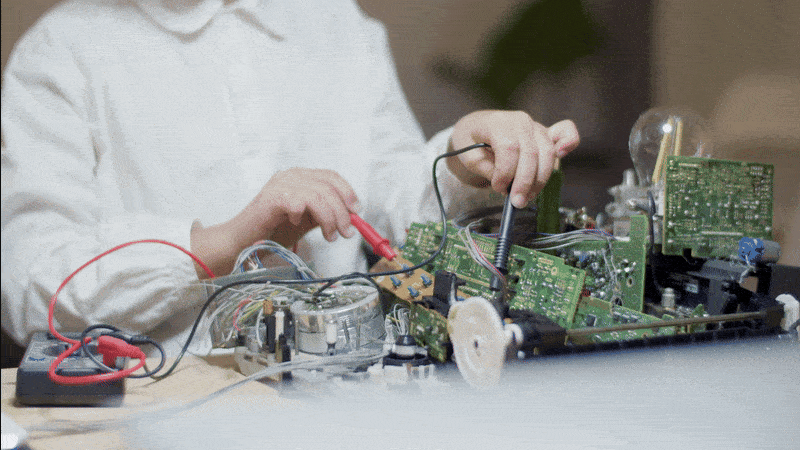In the rapidly evolving realm of technology, digital design assumes a crucial role in shaping cutting-edge products. Within this domain, RTL (Register Transfer Level) design engineering stands out as a fundamental area. Careers in RTL design involve crafting the foundational logic of digital circuits, playing an integral role in developing diverse innovations, from microprocessors to intricate system-on-chip designs. If you're interested in pursuing an RTL design career, this blog will provide essential guidance, covering how to build an impressive resume and explore internship and employment opportunities within this dynamic field.
Crafting Your RTL Design Engineering Resume
Your resume is your first impression on potential employers or internship coordinators. Here are key points to consider when crafting a resume for RTL design engineering:
Clear Objective or Summary: Your resume should start with a focused objective or summary statement. This brief section introduces you to potential employers, highlighting your career goals and summarizing your skills and experience in RTL design. For example, "Detail-oriented electrical engineering graduate with a passion for RTL design seeking an entry-level position to apply knowledge of Verilog and FPGA development in a dynamic semiconductor company."
Technical Skills: In pursuit of an RTL design career, I possess advanced proficiency in RTL coding languages such as Verilog and VHDL. Additionally, I am adept at utilizing industry-standard tools and software vital to RTL design projects, including Xilinx and Altera FPGA platforms. My expertise extends to simulation tools such as ModelSim and Synopsys Design Compiler, enabling me to effectively contribute to RTL design projects from day one. This combination of skills underscores my readiness to excel in a dynamic RTL design career, where precision and innovation are paramount.
Projects and Internships: Highlight key RTL design projects you've worked on during your academic studies or internships. Describe your role, the problem solved, and the tools used. For instance, "Developed a MIPS processor core using Verilog, achieving optimized performance and low power consumption, as part of a senior project."
Education: List your educational qualifications with a focus on relevant coursework related to digital design, computer architecture, or VLSI. Include your degree, university name, and graduation date. Mention any academic projects that are pertinent to RTL design.
Certifications: When crafting your RTL Design Engineer resume, consider including relevant certifications in RTL design or related areas, such as FPGA programming. These certifications demonstrate your commitment to professional development and adherence to industry standards. By showcasing these qualifications, you highlight your expertise and readiness to contribute effectively to RTL design projects.
Achievements: As an RTL design engineer, I was honored to receive recognition for my contributions to complex RTL design projects during my academic tenure. Additionally, I was awarded for my achievements in digital design coursework, showcasing my commitment to advancing skills in RTL design engineering.
Soft Skills: When crafting an RTL Design Engineer resume, it's essential to highlight not only technical prowess but also critical soft skills like communication, teamwork, and problem-solving abilities. These skills are pivotal for collaborating effectively within design teams and interfacing with stakeholders. In the resume, emphasize clear communication skills to articulate complex technical concepts, highlighting the ability to work collaboratively in cross-functional teams.
Formatting: Ensure a clean and professional layout for your resume. Use clear section headings, bullet points for readability, and a consistent font style and size throughout. Keep the resume concise—ideally, it should not exceed two pages. A well-organized resume makes it easier for recruiters to quickly grasp your qualifications and suitability for RTL design roles.
Internship Opportunities in RTL Design Engineering
Internships provide invaluable hands-on experience and networking opportunities. Here’s how to pursue internships in RTL design:
Research Companies: When researching companies for internship opportunities in RTL design, consider various factors beyond just their reputation. Look into their specific projects, technologies, and corporate culture. Companies engaged in cutting-edge semiconductor development, FPGA solutions, or ASIC design are often prime targets for RTL design internships. Explore their internship programs, employee testimonials, and recent innovations to gauge their alignment with your career goals.
Utilize University Resources: Your university's career center is a valuable resource for finding RTL design internships. They often have established relationships with companies seeking interns, and they can provide guidance on resume building, interview preparation, and networking strategies tailored to the tech industry. Attend career fairs, workshops, and networking events organized by your university to connect with industry professionals and gain insights into internship opportunities.
Personal Projects: Building a portfolio of personal RTL design projects is essential. This demonstrates your practical skills and passion for digital design to potential internship hosts. Create projects that showcase your understanding of RTL coding, simulation, and synthesis tools. Document your project development process, challenges faced, and solutions implemented. Sharing these projects on platforms like GitHub or personal websites can enhance your visibility and credibility as a prospective RTL design intern.
Networking: Networking is crucial in securing RTL design internships. Connect with professionals on LinkedIn who work in digital design or related fields. Engage in conversations, join industry groups, and attend webinars or conferences to expand your network. Networking can lead to insider knowledge about internship openings and referrals, increasing your chances of landing a valuable opportunity in RTL design.
Apply Strategically: Tailor your internship applications to each company and position. Customize your resume and cover letter to highlight relevant coursework, projects, and skills specific to RTL design. Emphasize how your background aligns with the company's goals and projects. Research the company's internship application process and deadlines, and submit your application well in advance. Following up with a thank-you note after interviews can leave a positive impression and demonstrate your enthusiasm for the internship role.
Career Opportunities in RTL Design Engineering
After gaining experience through internships or entry-level positions, consider these career Opportunities in RTL design engineering:
RTL Design Engineer: As an RTL Design Engineer, you'll focus on translating system-level requirements into register-transfer level descriptions using hardware description languages like Verilog or VHDL. You'll be responsible for designing and optimizing digital circuits, ensuring they meet performance, power, and area targets. This role involves collaborating closely with architects and verification engineers to achieve design goals.
Verification Engineer: Verification Engineers ensure the correctness of RTL designs by developing and running testbenches, performing simulations, and using advanced verification methodologies like UVM (Universal Verification Methodology). This role is critical for identifying and resolving design flaws before tape-out.
Design Verification Engineer: This specialized role involves in-depth verification of complex RTL designs against specifications and standards. Design Verification Engineers utilize formal verification, simulation, and emulation techniques to validate designs thoroughly.
FPGA Engineer: FPGA Engineers focus on implementing RTL designs into FPGA devices. They optimize designs for FPGA architectures, considering factors like timing constraints and resource utilization. This role requires expertise in FPGA synthesis, place-and-route, and timing analysis.
ASIC Engineer: ASIC (Application-Specific Integrated Circuit) Engineers leverage RTL design skills to develop custom integrated circuits optimized for specific applications. ASIC Engineers work on the entire chip design flow, from RTL coding to physical design and manufacturing, ensuring the final product meets performance and power requirements.
Conclusion
Embarking on a career in RTL design engineering can be rewarding and challenging. By crafting a compelling resume, pursuing internships, and exploring different career paths, you can position yourself for success in this dynamic field. Remember, continuous learning and staying updated with industry trends are key to thriving as an RTL design engineer. Good luck on your journey into the world of digital design!

VLSI Career Roadmap for Engineering Graduates: Step-by-Step Guide
A complete VLSI career roadmap for engineering graduates. Learn skills, domains, tools, and steps to become a successful semiconductor engineer in the chip design industry.

Title: Top VLSI Career Paths for 2026 Graduates and Best Semiconductor Companies in India
Meta Description: Explore the top VLSI career options for 2026 engineering graduates and discover India’s best semiconductor companies for high-paying jobs. Learn about roles, skills, and top recruites

Why VLSI Engineers Must Care About Side-Channel Attacks, Secure Design, Verification, and Hardware Mitigation
Learn why VLSI engineers must prioritize side-channel attacks, secure design, verification, and mitigation to build trustworthy, resilient, and future-ready hardware systems.

VLSI Skills Every Engineering Graduate Must Learn to Stay Ahead in the Semiconductor Race
Discover the must-learn VLSI skills for engineering graduates to stay ahead in the semiconductor industry. Boost your career with essential chip design and verification skills.
_11zon.jpg)
How Verification Engineers Master Tools and Languages Used in the VLSI Industry
Discover how verification engineers master essential tools, languages, and methodologies in VLSI industry. Learn skills needed to stay competitive and future-ready.
VLSI Classroom Training in Ameerpet, Industry Protocols For VLSI Design Verification And Validation, Career Opportunities For Electrical Engineers In Healthcare Industry, Can We Get A Job After Engineering, VLSI RTL Design and Verification Training Institute in Mumbai, VLSI Course in Mysore, Comparison Between VLSI And Networking Course, VLSI RTL Design and Verification Course in Mysore, RTL Design Course Insights, VLSI Online Training in Hyderabad, Compare VLSI And IoT Courses To Find Best Fit For You Find Your Course, Tips For Crafting An Impressive VLSI Resume, Guide To VLSI Testing Techniques DFT Bist Atpg
Hours
Copyright 2025 © VLSI Technologies Private Limited
Designed and developed by KandraDigitalCopyright 2025 © VLSI Technologies Private Limited
Designed, Developed & Marketing by KandraDigital
